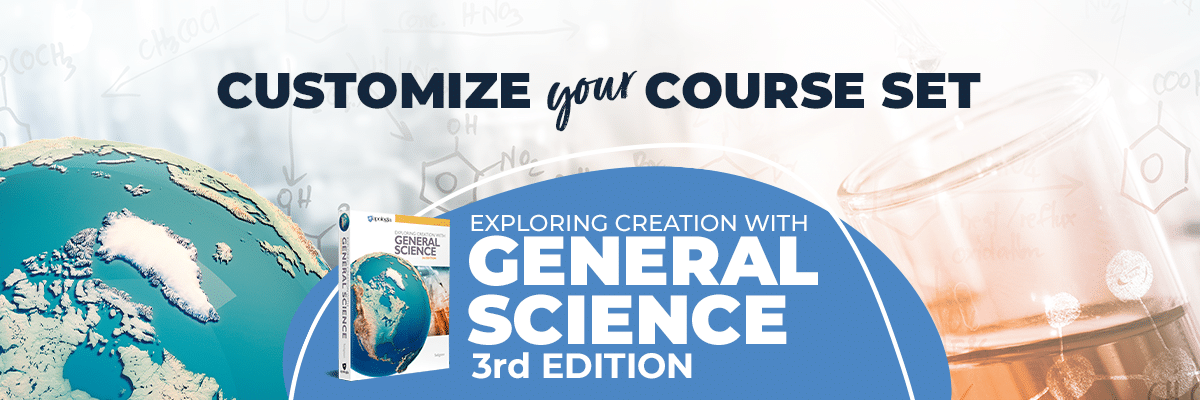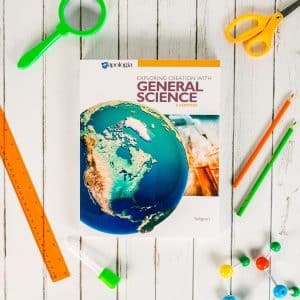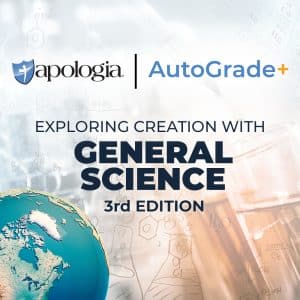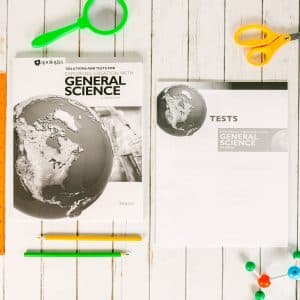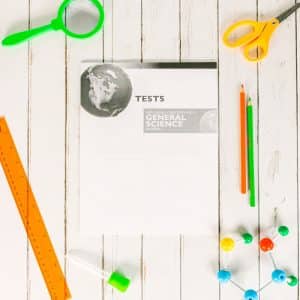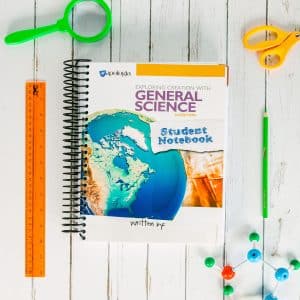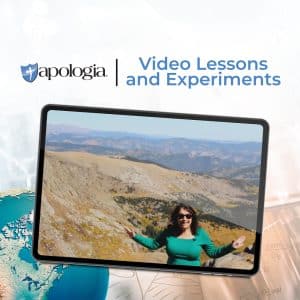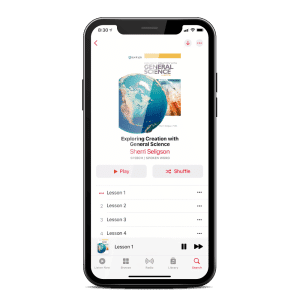Description
Exploring Creation with General Science curriculum, 3rd Edition, is designed to equip middle school students with the tools they need to transition from elementary to middle school level sciences easily.
Curriculum Overview
In Apologia’s Exploring Creation with General Science, 3rd Edition, students will understand the world surrounding them so they can appreciate the real-world relevance of scientific inquiry and the beauty of Creation.
This is a true General Science course covering a variety of branches of science, including astronomy, meteorology, oceanography, earth study, geology, paleontology, and environmental science modules, giving students a solid foundation in that broad field of study.
Students will:
- Learn how to utilize the proper scientific method in a detailed and engaging way
- Record data and report it
- Read, create, and utilize several types of graphs–a skill that is found in SAT and ACT exams
- Read about the history of great, Godly scientists
- Complete a final, hands-on project as the culmination of the course
Textbook
The Exploring Creation with General Science, 3rd Edition, student textbook is written in a conversational format with the author talking directly to your student. Your student is guided through key learning strategies like thinking critically about what they are learning, identifying important parts of the information presented, taking meaningful notes, and completing experiments.
Testing
There are two testing options for this course. You can choose AutoGrade+, our auto-graded online testing, or the traditional Solutions Manual and Tests containing answers to study guide questions, test solutions, and a set of student test pages. An extra set of test pages is also available as an add-on.
Student Notebook
The student notebook for Exploring Creation with General Science, 3rd Edition, is highly recommended. It is designed to help students foster the independence, organization, and preparation they will need to thrive academically.
The textbook references the notebook throughout and directs students to complete the guided note-taking prompts, add experimental data and observations, and complete the comprehension questions. Your student will need this component to gain the best educational experience.
The student notebook introduces students to several methods for taking notes to build this skill set. Notetaking helps students retain information, review for tests, and record their thoughts as they connect the concepts presented in the textbook with their own ideas. Taking good notes can bridge the gap to mastering a concept.
Students will learn to:
- Outline the main concepts of a passage and list the minor concepts under the main ones.
- Use the author’s style to guide their notes. As the author defines a term, students will include that definition in their notebook.
- Compare and/or contrast two things using diagrams.
- Classify items referenced in the text.
Write notes in their own words instead of copying text word for word. - Look up and define new or unknown words to help build scientific vocabulary and better understand what they’re reading.
Additionally, the student notebook helps students keep a carefully organized, detailed, and complete lab notebook. Students can use the included lab report forms to record the information gathered during experiments and master writing a formal lab report.
The student notebook includes:
- Suggested Daily Schedule
- Breakdown of daily assignments, detailing exactly what needs to be done each day
- Note-taking pages which include prompts to help teach the student how to identify and record important information from the text
- Space to answer all study questions in the textbook, which serves as a review and prep for the tests.
- Space to record results from hands-on activities
- Lab report forms for each experiment found in the textbook
- Creation Connection pages where students record their intellectual, emotional, and spiritual reactions to what they are learning
Video Lessons and Experiments
In the streaming video lessons for Exploring Creation with General Science, Sherri Seligson provides instruction on each module of the textbook, using visual animations and on-location video clips. Additionally, the videos include demonstrations of the experiments and activities so parents and students can better understand how to complete them at home.
These engaging video lessons help students absorb the concepts in a richer and more engaging way, and visual animations help explain more difficult concepts in a three-dimensional, interactive way.
These streaming videos are a 15-month rental and are accessed through your Apologia account.
Watch a sample video lesson with Sherri Seligson.

Audiobook
This audiobook version of the Exploring Creation with General Science, 3rd Edition textbook is the perfect accompaniment to the textbook for students who are auditory learners, slow readers, or have learning challenges that make reading difficult.
Hands-on Experiments
In early modules, specific portions of the text are highlighted so students know where to find important information and are guided through the lab report process. Although students may complete more than one experiment in a module, they are given the opportunity to choose to complete a single formal lab report, thus building on interest-driven learning. Lab report samples are provided so the students learn proper formatting. All of the experiments in this course utilize easy-to-obtain household materials to demonstrate complex scientific principles, so no special equipment is necessary.
Product Flip Through
Look inside the textbook, student notebook, solutions manual, and tests for General Science.



